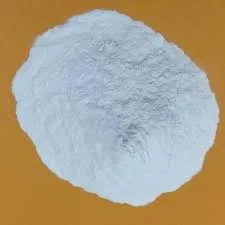
авг. . 13, 2024 16:21 Back to list
Exploring the Viscosity Characteristics of Hydroxyethyl Cellulose for Industrial Applications and Formulations
Understanding the Viscosity of Hydroxyethyl Cellulose Properties, Applications, and Importance
Hydroxyethyl cellulose (HEC) is a water-soluble polymer derived from cellulose, a natural organic polymer found in plant cell walls. Renowned for its versatility, HEC plays a vital role in various industries, particularly in pharmaceuticals, food, cosmetics, and construction. One of its most critical attributes is its viscosity, which affects its performance in diverse applications. This article explores the viscosity of hydroxyethyl cellulose, its significance, and implications in various fields.
Viscosity Defined
Viscosity measures a fluid's resistance to flow. In the case of hydroxyethyl cellulose, viscosity is influenced by several factors, including the degree of substitution (the extent to which hydroxyethyl groups replace hydroxyl groups in the cellulose structure), molecular weight, concentration in solution, and temperature. High-viscosity grades of HEC provide thickening, stabilizing, and gelling properties, making them invaluable in formulations requiring specific texture and consistency.
Factors Influencing Viscosity
1. Degree of Substitution The degree of substitution significantly impacts HEC's viscosity. A higher degree results in increased hydrophilicity and solubility, leading to higher viscosity solutions. Manufacturers can tailor HEC grades to meet specific viscosity requirements for different applications.
2. Molecular Weight The molecular weight of HEC also influences its viscosity. Higher molecular weight HEC produces more viscous solutions, which is essential for applications requiring substantial thickness. Conversely, lower molecular weights yield less viscous solutions, suitable for different formulations.
3. Concentration Viscosity is also concentration-dependent. As the concentration of HEC increases in a solution, its viscosity dramatically rises. This relationship allows formulators to adjust the concentration of HEC to achieve the desired viscosity profile for their products.
4. Temperature The viscosity of HEC is affected by temperature. Generally, an increase in temperature results in a decrease in viscosity, which affects its application in temperature-sensitive environments. Formulators must consider this factor to ensure consistent product performance.
hydroxyethyl cellulose viscosity

Applications of Hydroxyethyl Cellulose
HEC's viscosity-modifying properties lend themselves to various applications across multiple industries
1. Pharmaceuticals In pharmaceuticals, HEC is extensively used as a thickening agent in gels and topical creams. It enhances the bioavailability of active ingredients and ensures proper viscosity for ease of use and application.
2. Cosmetics The cosmetic industry relies heavily on HEC for its thickening and stabilizing properties. It is found in lotions, shampoos, and conditioners, where it plays a critical role in providing a desirable texture and preventing ingredient separation.
3. Food Industry HEC acts as a food additive, contributing to the thickening and stabilization of sauces, dressings, and dairy products. Its ability to retain moisture and improve mouthfeel is highly valued in food formulations.
4. Construction In the construction sector, HEC is used in mortars and cement-based formulations, improving workability and consistency. The viscosity of HEC contributes to better suspension of solids, preventing sedimentation and ensuring even application.
Conclusion
Hydroxyethyl cellulose is a multifunctional polymer with significant implications across various fields, driven primarily by its viscosity characteristics. Understanding the factors that influence its viscosity enables manufacturers and formulators to tailor products to meet specific requirements, ensuring optimal performance and user satisfaction. As industries continue to innovate, the importance of HEC and its viscous properties will likely grow, solidifying its place as a crucial ingredient in modern formulations.
-
What is HPMC?
NewsJun.06,2025
-
Understanding Redispersible Powder: The Future of Construction Materials
NewsJun.06,2025
-
Understanding RDP Powder: The Ultimate Solution for Your Construction Needs
NewsJun.06,2025
-
Pure HPMC: The Ideal Solution for Modern Construction and Building Materials
NewsJun.06,2025
-
Methyl Hydroxyethyl Cellulose: A Versatile Chemical Compound
NewsJun.06,2025
-
Hydroxyethyl Cellulose Power: The Essential Chemical for Various Industries
NewsJun.06,2025







